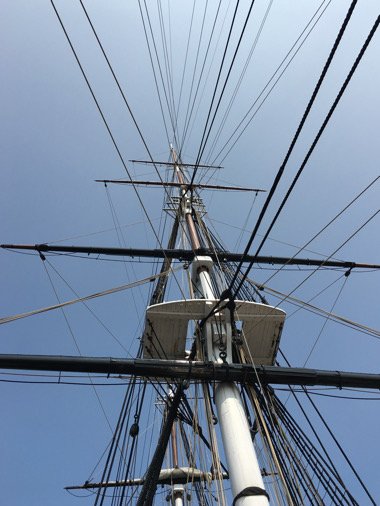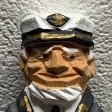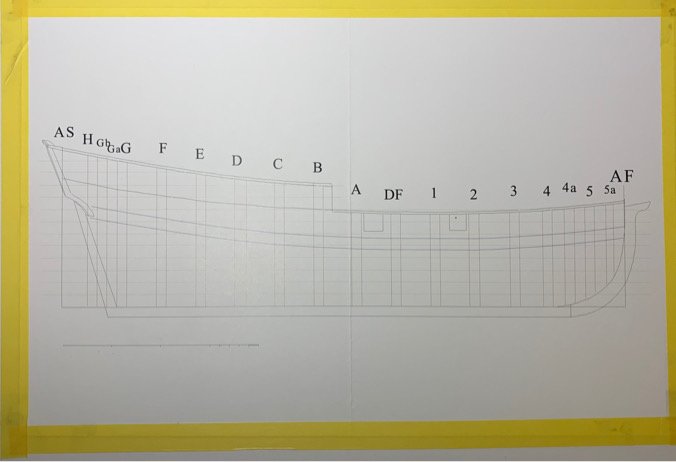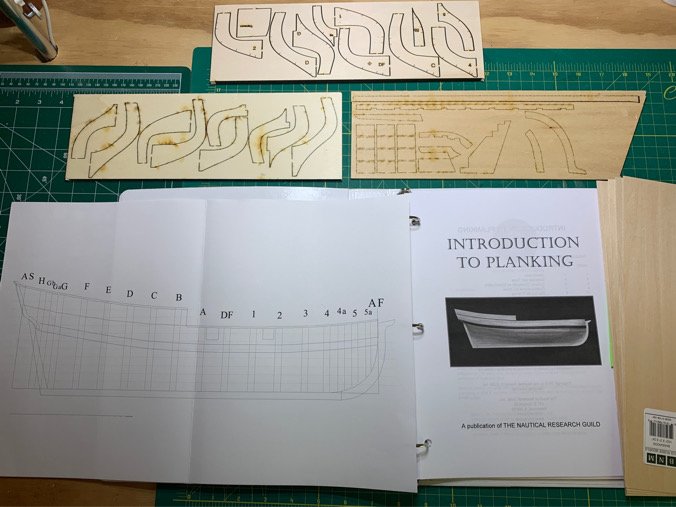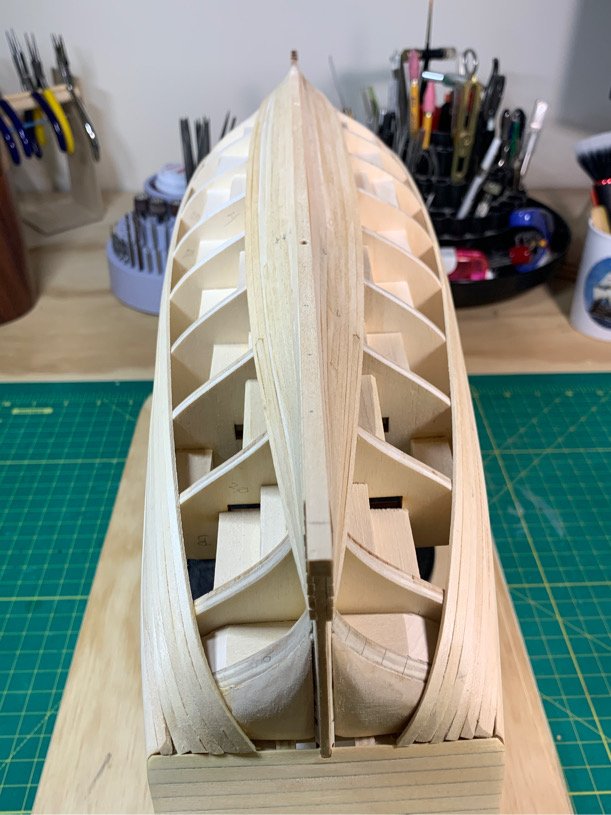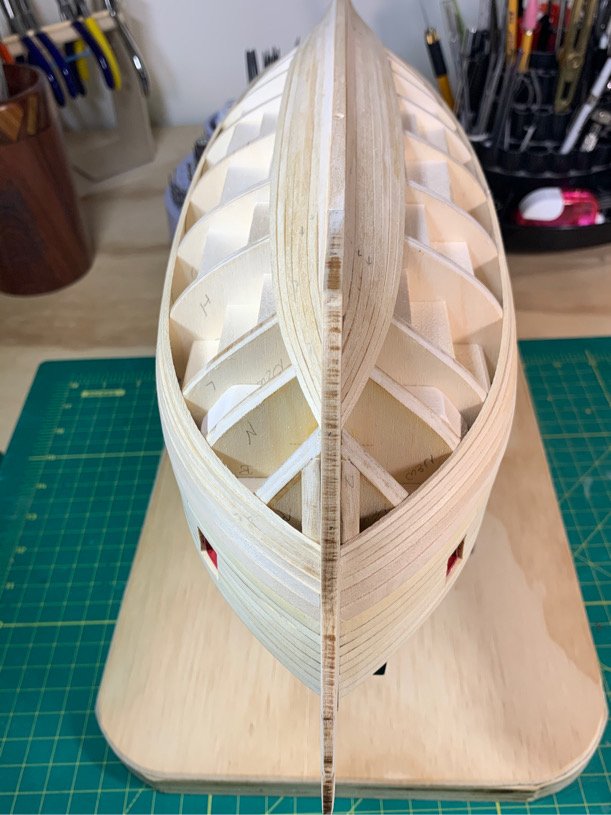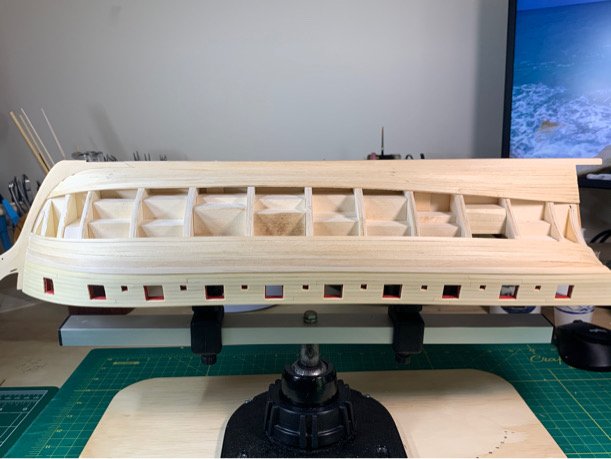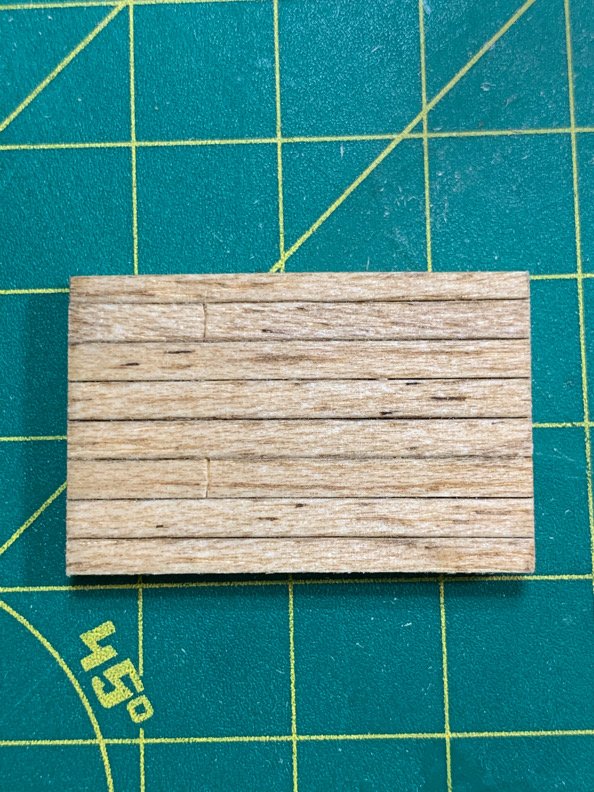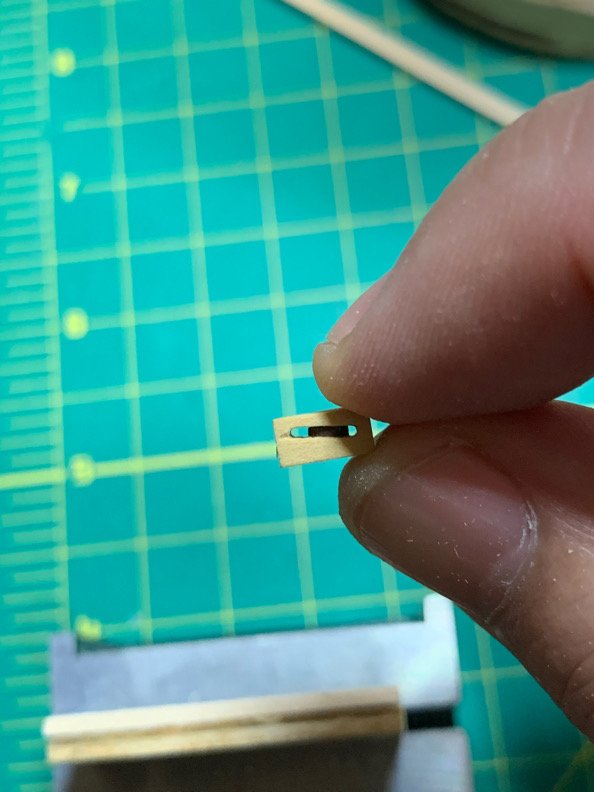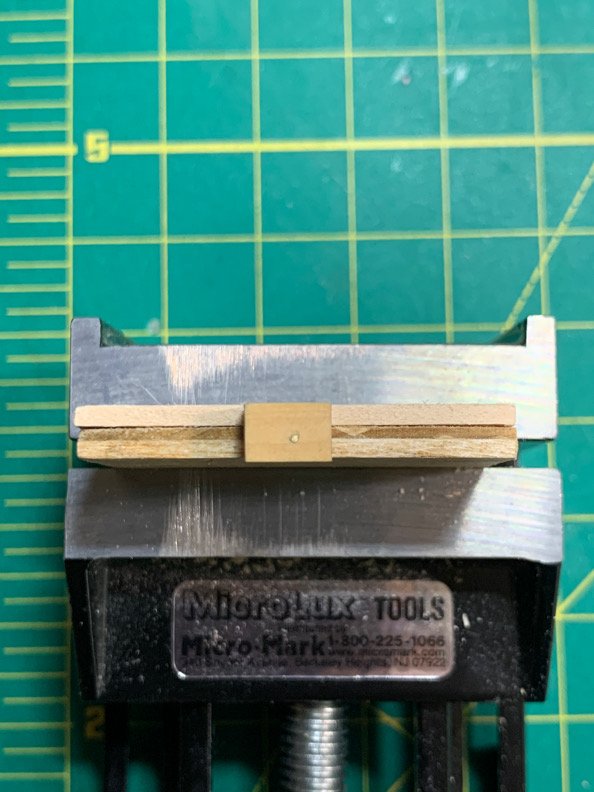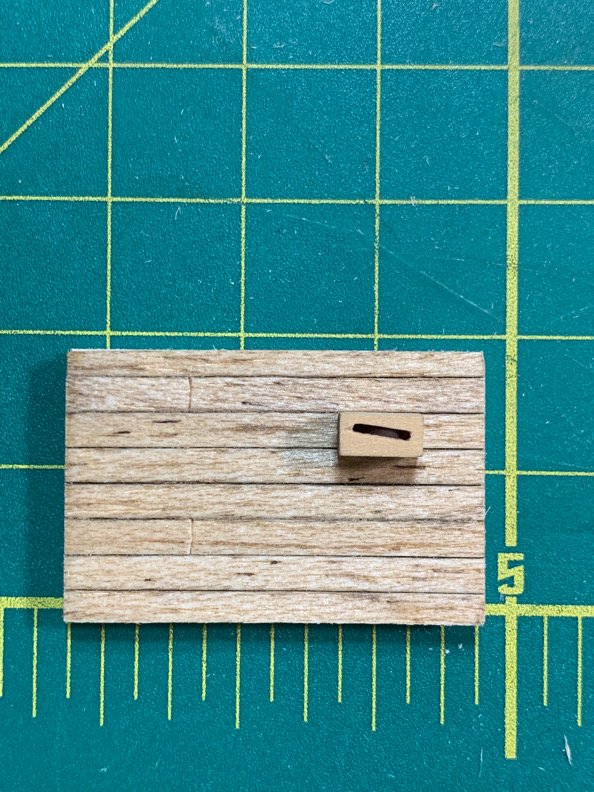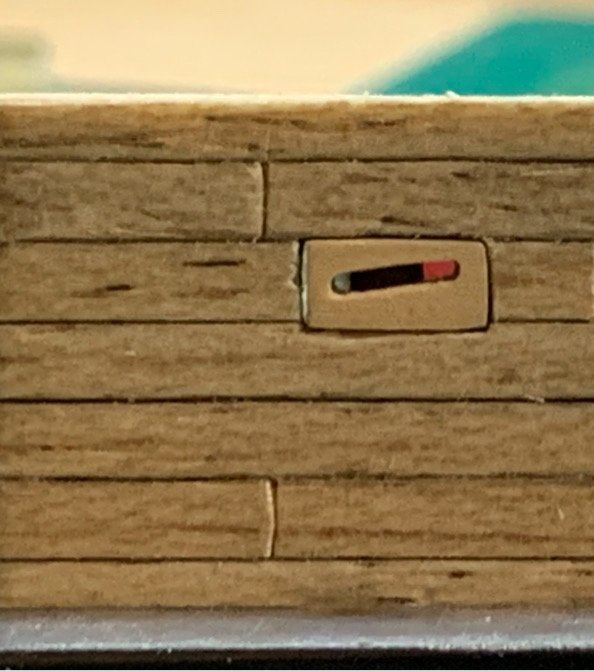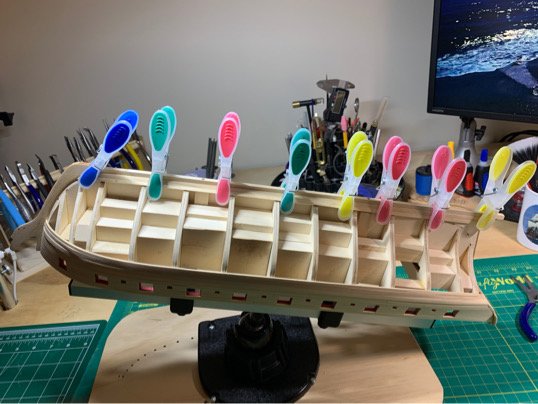-
Posts
1,256 -
Joined
-
Last visited
Content Type
Profiles
Forums
Gallery
Events
Everything posted by Overworked724
-
As with all new logs, here are the baby pics. 👶 This is a side project focusing solely on planking technique, so will give me a valuable added tool to build some confidence, and when I need a break from the Syren. Besides...should be fun! Printed out the practicum. Already read it, and I know I’ll have some questions for Toni @tlevine when I get to those parts. Nicely written though and easy to follow for the most part. Stuck it in a spare binder because I’m anal retentive like every other modeler. Already had a 1/4” trifold foam presentation board I got from Walgreens. It fits the plans perfectly. Used 3M spray to adhere the plans and fixed the border of the plans with some Tamiya tape...just for giggles really. The folded flaps were also sprayed and glued down to make a sort of double layer foam board. 🤓 Let the fun begin...after reading a couple of the other builds for the tutorial kit, I’ll be interested to see if any of the frames seem to ‘bulge out’ asymmetrically. More to come....
-
Well, I decided to invest in a side project developed by my ship club mate, Toni Levine (@tlevine). Since my last post on my Syren build log, I've made more progress in some basic techniques of manipulating the planks. Specifically, I received an old plank clamp which was the property of Steve Wheeler (we all miss you, Steve). Hopefully that will take some of the plank trimming frustration away...so far it works great on a few trial planks. In the interim - I've received the NRG tutorial kit. Like others who adopted this side project, I wasn't really sure where to put this build log, so stuck it where others have - hope that's ok. If this turns out, aside from gaining a bit more confidence, I plan to mount it as a wall hanging and make a present out of it...but have to wait and see the final result. Pics to follow... Moving on!
-
That is exactly what I do, Jamie...I'm just not very skilled at it I guess. Another thing is that basswood tends to get scored to a certain point then cracks apart along the cutting line unevenly. I'm sure with denser wood like the cedar or boxwood this is not a problem. Something to consider for future.
-
Actually - I'm sure that is part of the problem. I would back stop the plank and overlay the straight edge, but halfway through the cut, I would notice the ever so slight wandering for the edge from the marking. I agree with you and Dave that sandpaper may be a much better grip than cork. Luckily, I'm going to (hopefully) copper the hull, so I just need the shape...but this is giving me some good experience on what NOT to do...so I'll probably jump on the half hull kit from NRG and try to focus on planking technique as a fun side project.
-
HI Dave. That is precisely how I have been trying to taper - but my efforts are a bit below par. Only difference between how you are doing it and how I have been is that I used cork instead of sandpaper on the back of the ruler. I might try sandpaper...! A very helpful call from Kurt cheered me up. I'll jump back on the planking horse a bit later. May amuse myself with drilling and setting the treenails on the bulwarks... Moving on!
-
Well...I was not expecting perfection. I’m using this planking project to identify my weaknesses and build some skills. However, my frustration is boiling over. I won’t post pics because it’s too embarrassing... I realize my biggest problem is trying to cleanly taper a 1/8” plank. I just don’t know how others do it. Another problem is the basswood strips. I realize now many of them are wider/narrower than they should be...which makes the job even harder. The quality of the basswood strips is poor and the edges are extremely rough. However, I’m glad I’m using the basswood because I don’t feel like I could do a respectable job using nicer wood. I’ve tried lining the hull, but the lines are defunct after I lay a plank because I can’t get the plank to lay clean against the edge of the adjacent plank. Plus the taper (I am using a razor blade and straight edge - poor method) is not a straight clean edge...which makes it impossible. How do others taper their planks? Finally...I can see why having a seamless hull is the recommended way forward. The gaps between the frames only give you the adjacent planks to adhere to...and so you are completely limited by the frame edge for surface area. Makes setting stealers more troublesome, and you need to bend the strips across individual small sections instead of having a clean continuous surface area. Next time it’s filler blocks all the way. I also think my fairing was not spot on...as I have the irritating clinker built effect continuing along the front of the hull. I really tried to fair her up as tightly as I could. Not certain what to do at this point, so I’m taking a break for the weekend. I’ll work on something else. I’m sure I can finish the planking, one way or another...but it won’t be planking...it will be ‘dry walling’ since I’ll just be covering the hull with wood to fill and copper over. Was really hoping I could do a better job. Moving on...kind of....
-
Planking continues. I’m doing my best, but it’s some rough going. Transom is especially difficult. The bend below the counter, and trying to accurately trim the planks is beyond me. Doing my best though. Have a feeling my planking job once done is going to look like a patchwork quilt! I see a lot of wood filler in my future. Moving on....!
-
Outstanding job on the head rails! Tricky work which came out flawless!
- 950 replies
-
- syren
- model shipways
-
(and 1 more)
Tagged with:
-
Hi Will. Thank you. Yes, I’ve read many many blogs and watched several vids. I am attempting to use the method lining off the frames. As with all things, seeing is one thing, doing and developing the skill set is another. 😏 Again, my problem is understanding the technique needed to consistently thin down a plank. it’s funny you mention the Winchelsea. That’s probably going to be my next build...which could be a few years out at the rate I’m going. 🤔 Thanks for the helpful feedback on Chuck’s YouTube vids. I’ll check them out!
-
Well, Dave...I'd say as a beginner, I'm probably right where I should be as my efforts are barely passable as far as I can tell. I see a crap ton of wood filler in my future! I had some initial thoughts of trying to get the hull planking done in a way that might allow me the option of leaving the hull natural and forgo the copper plating. But I don't think that will be possible. I'm doing ok...nothing horribly bad, but it's going a bit rough...the stern especially... I have learned a couple of things first hand that I will not forget for my next model: 1. Basswood strips are absolute crap. The basswood strips that came in my kit are bad even for basswood...knots everywhere, dry as a bone, and grainy as all get out. After I get the hull planked, I'm not using basswood again. 2. If I ever do another plank on bulkhead I will be using filler blocks between every bulkhead frame. I can see the imperfect depressions between the frames where I don't have fillers...and planking the bow and the stern area without full surface area makes the planking that much harder to put on. So filler blocks it is...live and learn 3. Spiling or trimming planks is a mystery to me. I need to technique to make uniformly trimmed planks. Have no clue how other people do it...I'm using a razor blade and a ruler! (I'm equipment challenged) Ok....off to bed. Pics to follow a bit later! Moving on...to dreamland.
-
I did plan to make the holes after sanding down the inner bulwarks and prior to installing the inner bulkhead planking. The problem I referred to is in the technique needed to make straight edges to the holes, and making the holes themselves...without marring the hull overmuch. We shall see!! Moving on...
-
Took a stab at trying to install one of my earlier sheave blocks. I used the earlier faux deck made of basswood and added some filler blocks to simulate the thickness of the bulkhead. In the end, after making a horrible mess, I was able to get the block into my fake bulkhead. It’s ok...but It’s not as clean as I’d like. I wish I’d have made clean openings to instal the blocks while building up the exterior bulkheads. 😣Sanding sticks and pin vise with drill bit... I’ll be sweating bullets when trying to make these slots. 🙄 OK...
-
Thanks, Will! Very much appreciated!! Like you, I get ideas from other build logs and read yours as well. Many different ways to simulate the sheaves. I liked your approach to making the sheaves. Since I don’t have a mill or mini-lathe, I needed to go a bit out of the box...which is the fun part of our gentle hobby. But...Making them is one thing...getting them on the ship is another. Seems Jesse’s build log was the right approach. Have the sheave blocks made and make the openings for them as you plank up the exterior bulkheads. 🤔 I’ll make the block openings before I put in the shear strake. So I’m now working on that approach while I continue to noodle over planking. Planking is going slow...but here are a couple of boring pics. 😊 Moving on...!
About us
Modelshipworld - Advancing Ship Modeling through Research
SSL Secured
Your security is important for us so this Website is SSL-Secured
NRG Mailing Address
Nautical Research Guild
237 South Lincoln Street
Westmont IL, 60559-1917
Model Ship World ® and the MSW logo are Registered Trademarks, and belong to the Nautical Research Guild (United States Patent and Trademark Office: No. 6,929,264 & No. 6,929,274, registered Dec. 20, 2022)
Helpful Links
About the NRG
If you enjoy building ship models that are historically accurate as well as beautiful, then The Nautical Research Guild (NRG) is just right for you.
The Guild is a non-profit educational organization whose mission is to “Advance Ship Modeling Through Research”. We provide support to our members in their efforts to raise the quality of their model ships.
The Nautical Research Guild has published our world-renowned quarterly magazine, The Nautical Research Journal, since 1955. The pages of the Journal are full of articles by accomplished ship modelers who show you how they create those exquisite details on their models, and by maritime historians who show you the correct details to build. The Journal is available in both print and digital editions. Go to the NRG web site (www.thenrg.org) to download a complimentary digital copy of the Journal. The NRG also publishes plan sets, books and compilations of back issues of the Journal and the former Ships in Scale and Model Ship Builder magazines.

